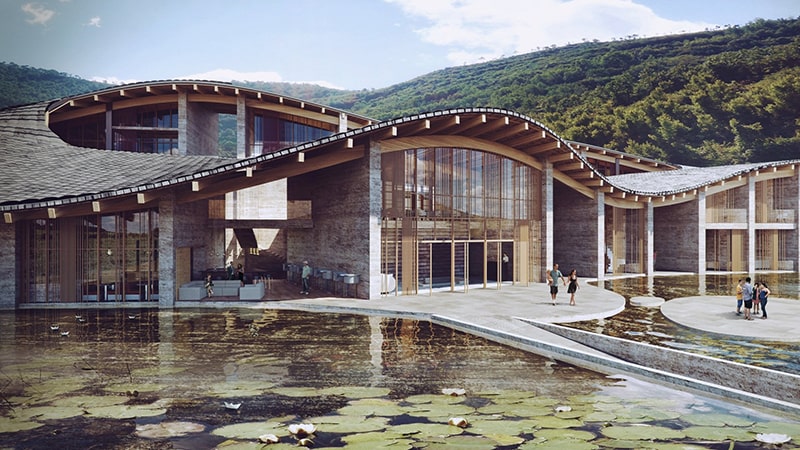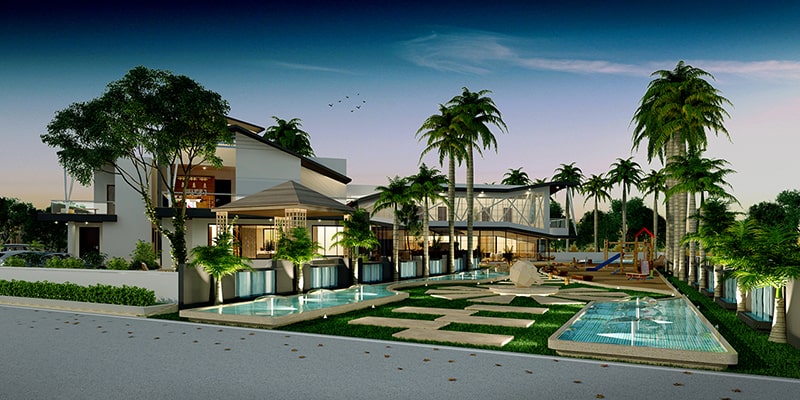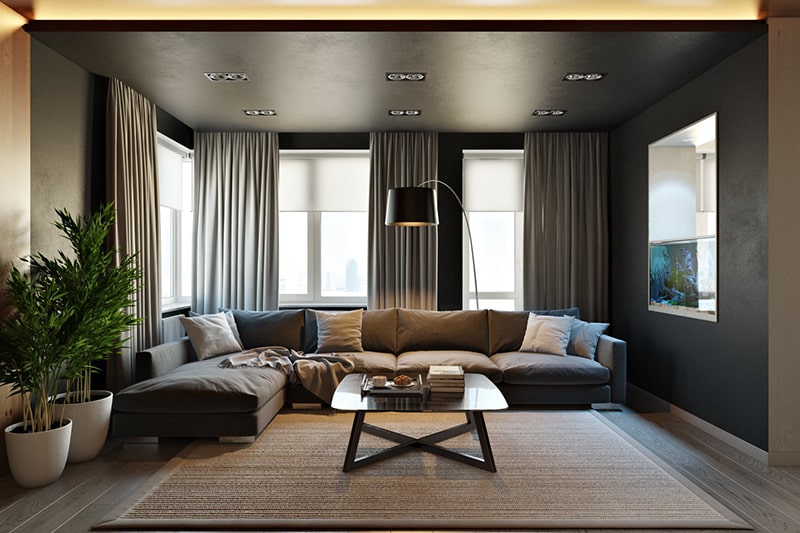The process of 3D rendering in design is incredibly complex and detailed, but when done properly, it makes for an enormous impact. It can range from things as simple as a 3D schematic with flat surfaces and no color to a photorealistic, intricate drawing.
The most skilled 3D rendering services can design scenes that look entirely realistic and would convince even the most knowledgeable observer that they are looking at a true photograph. It is not an easy feat to make these designs look so realistic, but there are obvious benefits to it.
Depending on whether you are doing a simple 3D sketch of a new product you’re introducing or are looking for a photorealistic design to market a new hotel chain, your costs will vary significantly when having 3D models created.
The Main Factors that Impact the Photorealistic 3D Rendering Prices
1. The Scale of the Project
One of the most crucial elements of any project is its scope. A larger task will inevitably cost more than a smaller task. The fact of the matter is, with any type of rendering, including virtual reality
Consider a small residential design, such as a 1200-square-foot house, but with a very intricate and detailed design – landscaping, roof lines, texture on the exterior – the works. This is complex and time-consuming, certainly, but when compared with a simplistic design – flat walls, little texture, no landscaping – on a large apartment complex full of 1200-square-foot apartments, it will not be as expensive.
This is because, in spite of the differences in complexity, the small details add up quickly in a much larger design, making it significantly costlier in no time at all.
In most cases, 3D modeling freelancers may have a set list of sizes and options that are premade based on complexity and scale. This helps to approximate price based on the general size of a design, and also gives an ability to estimate larger or smaller designs that don’t exactly conform to those specifications, because they can simply rework the prefab model to create your exact project.
Because of how much detail has to go into every pixel in a photorealistic render, the size of the project makes one of the biggest impacts on the price. Even a simple seeming design still has texture and depth, and these details add up over the long run of a large project, and the price adjusts accordingly, so be sure to know how large of a project you are expecting so that you can budget it properly.
2. Complexity, Texture, and Depth of the Project
Like we discussed earlier, size is a massive factor in the cost of a project, but another important piece is the complexity of the design.
A simple, flat design that is less realistic and stylized will cost less than a much more lifelike image. The difficult thing is, however, that there are so many different items that add complexity when you are creating something photorealistic.

Many things that are typically overlooked in real-life or in photography and art contribute to the realism and complexity of a design, despite the fact that they are typically only noticed if they are missing.
Textures are incredibly important to photorealism. When you look at a piece of art, the difference between human skin and fish scales is incredibly evident, and beyond even that, the difference is still noticeable between facial skin and the skin on a wrinkled hand.
Texture is incredibly complex, because it is essentially a minute, non-repeating pattern in which every individual piece needs to be crafted with special attention. Adding realistic texture is not something that is easily and quickly done, and because of this, it adds significant cost.
Another factor is depth when designing a 3D rendering. Objects at different depths will have different details and scales associated with them, and they may even overlap.
Depth gives dimension and makes a design lifelike, so incorporating it accurately into a design will significantly improve it, but it will also alter the cost. Many programs now have numerical values for depth that can be tweaked and adjusted easily, but it is still time-consuming and labor intensive.
A final issue of added complexity is light and shade. There are many other unnecessary things you can add to make something even more lifelike, but proper lighting and shadows are imperative and will make significant improvements.
Simple lighting angles can be added fairly efficiently and cheaply, but these will only be a portion of the illumination that needs to be included in your design. Light reflects off of surfaces, shadows overlap and depth impacts their darkness and shape. All of these factors will impact how much time is spent on lighting and how much detail needs to be incorporated into the design.
3. Number of Revisions and Updates
This one seems pretty obvious. The more times you do the design, the more expensive it will be. Every project will encounter changes and need updates, that’s for sure, but this does make an impact on the budget for a project. In many cases, redesigns are built into the cost and deadlines of a project, but additional updates will change those numbers and push the timeline back.
First of all, an update or revision changes the deadline, and this impacts the cost because the rest of the project gets delayed. Changing the timeline on a project is sometimes a necessary evil, but the more you can avoid it, the more stable your budget and overall project will end up being.
Not only will it affect your timeline, it affects the designer’s timeline, and they may have other projects that need to be shifted and they could therefore increase your prices.

Secondly, these designs take time and diligence. Like was mentioned earlier, a 3D rendering, particularly as they become more lifelike and dynamic, is a complex and detailed design.
Every revision that occurs will encounter the same complexity issues that were discussed in the previous sections. You need to consider size, textures must be adjusted, lighting accounted for, and depth incorporated properly. All of these corrections will make an impact on the budget and the timeline.
It’s important, when doing this, to consider the revisions that will be required, because rarely will a design be perfect the first time through. Make sure to choose the correct program that will give you more flexibility, such as Arion, which is extremely flexible with rendering lighting sources, or Artlantis, which has an impressive array of presets so that you can swap them more readily.
Choosing a qualified and skilled designer will help, because they will be able to navigate the world of rendering more quickly and efficiently, and that will ensure that you don’t spend too much time on revisions or updates.
4. Extra Features
To make your 3D rendering more interesting, there are plenty of additional features you can incorporate.
RELATED: 3D Rendering: What It Is and Why You Should Care
Let’s say you have completed a complex design for a brand-new apartment building that will be constructed, and you want to use the 3D rendering as a marketing tool. It’s incredibly useful on its own as a visualization tool, and it can show prospective clients a very appealing view of the future building.
But there’s no need to stop there when you have a dynamic 3D rendering with all the touches of realistic design in place. You can take it so much further.
One great additional piece you can incorporate is an interactive display. This is a moveable, changeable design that allows the user to put in special items and take certain actions.
You can allow the client to adjust the wallpaper, change fixtures, or even simulate their own furniture in the space to see how it would look, and this could act as an impressive marketing tool.
Another option is to create a birds-eye visualization that allows you to change perspective as if you are flying over it, to help visualize the footprint and location of the building or design.
This would be especially useful with our imaginary apartment building when you are discussing with city planning professionals the location and impact of the property on the surrounding blocks.
High definition options are available if you wanted to incorporate more clarity into the design, and you could make it viewable in virtual r
All of these additional features are incredibly beneficial, but they will affect your prices, so plan accordingly. If you can justify them financially, however, it may be invaluable to utilize them as marketing and planning techniques so that you can bring in more money or more efficiently use the design to save money elsewhere.
5. Custom Elements and Models
A final price point for your design is customization. Everything on this list is some form of customization, but this is above and beyond.
Not only can you customize the size and layout, and incorporate beautifully detailed textures and patterns into these designs, you can customize so much more. A professional designer can take your idea and incorporate something much more dynamic and custom, for a price.

You can use the services of a professional who specializes in 3D furniture rendering, 3D landscape rendering, or 3D interior rendering who will be able to create unique pieces for your rendering.
Most software or design organizations have some preset designs for all of these items, such as standard sofas and shrubbery to incorporate into your drawing, but creating unique pieces takes much more time and attention to detail, which will, in turn, raise your prices.
For example, you can have a designer craft detailed furniture pieces, such as leather armchairs, a photorealistic stone fireplace, and luxurious rugs that will decorate the lobby of your apartment complex. Or, instead, you could have customizable designs for wall coverings, floor materials, and hardware finishes in each of the individual rooms.
These designs can become costly, but they have clear benefits as well. For one, like everything in the digital realm, you can adjust them on the fly. Instead of going out and photographing or purchasing different pieces of furniture, either to stage or to visualize your space, you can sketch them up rapidly, and if you’d prefer a darker leather, you can adjust that immediately.
Additionally, it’s significantly cheaper, especially for a piece of promotion or marketing, to design something as a 3D render instead of actually creating and staging the
Prices will always vary with these projects. It’s imperative that you plan appropriately and ensure that you have a sufficient budget for these designs. Doing a photorealistic rendering, however, offers a lot of benefits for the cost when compared to other methods, such as hand drawing or photography.
There are many resources and tools out there, especially with the various software options, that will enable you to estimate prices and make adjustments to the complexity and size of your design before you even begin.
You can customize your designs and then choose how best to craft your 3D rendering. Check out the many highly qualified professionals on Cad Crowd who are able to complete your work. These designers are skilled and flexible and will be able to craft stunning pieces of art, architecture, engineering, and design, and will give you impactful, photorealistic designs that you can use for whatever you need.
Whether you are an architect looking to create a new building, or a marketer looking for promotional materials, you will be able to have stunning visualizations at your fingertips rapidly when you hire a vetted freelancer through Cad Crowd. Learn how it works or get a custom quote.

great